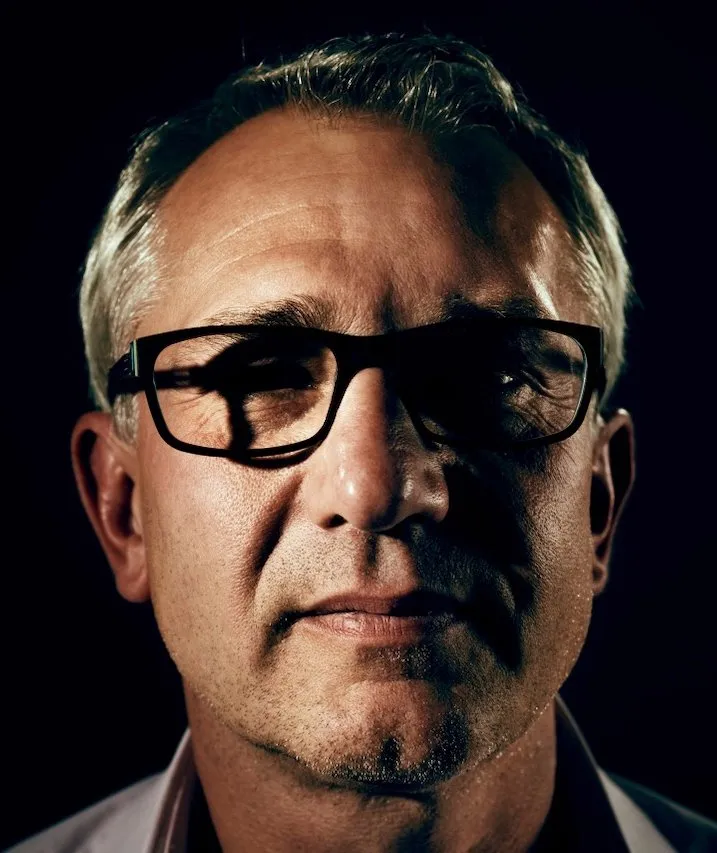Hello HIVEs!
As I reported here last week, we are on a trip through Santa Catarina (Brazil). For our stay in Florianópolis, I had chosen a house on the beach, which is a bit off the beaten track, with no access to the road network. The moon phase would be ideal for a Milky Way photo.
Unfortunately, the plan to get some beach photos with a starry sky didn't work out. Firstly, it was mostly cloudy at night. Secondly, the Brazilians have equipped the entire beach with state-of-the-art LED lights that, like floodlights in a stadium, turn night into day. You can probably see the coastline very well from the moon at night. Light painting was hardly conceivable under these circumstances.
Wie ich letzte Woche an dieser Stelle berichtete, befinden wir uns auf einer Reise durch Santa Catarina (Brasilien). Für unseren Aufenthalt in Florianópolis hatte ich ein Haus am Strand ausgesucht, welches etwas abseits, ohne Anbindung an das Strassennetz liegt. Die Mondphase wäre ideal für ein Milchstraßen-Foto.
Der Plan, ein paar Strandfotos mit Sternenhimmel zu bekommen, ging leider nicht auf. Erstens war es Nachts meist Bewölkt. Zweitens haben die Brasilianer den gesamten Strand mit modernsten LED-Lampen ausgestattet, die ähnlich einer Flutlichtanlage im Stadion, die Nacht zum Tag machten. Wahrscheinlich kann man den Küstenstreifen nachts sehr gut vom Mond aus erkennen. An Lightpainting war unter diesen Umständen kaum zu denken.
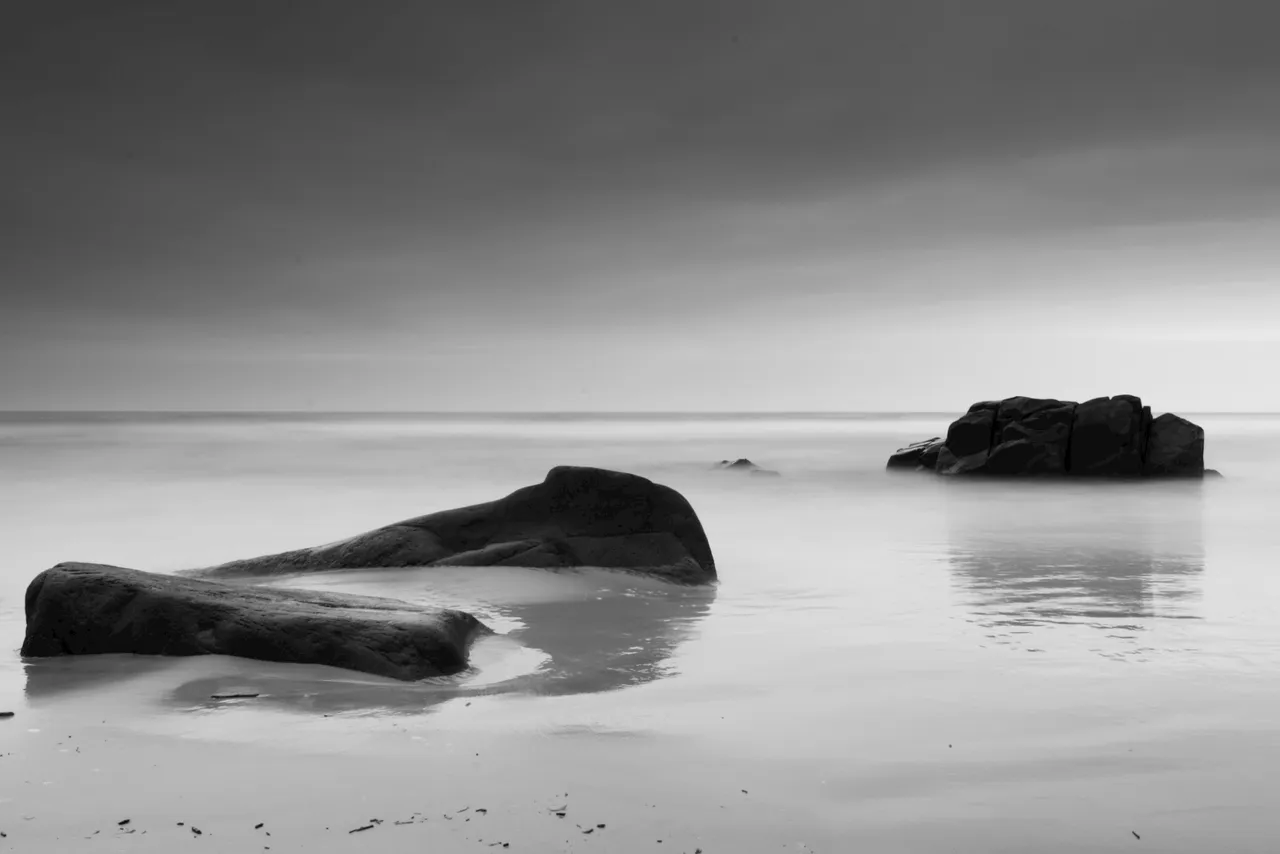
Canon EOS 6D Mark II
EF24-70mm ƒ4L IS USM
ISO 100; 28mm; ƒ16; 51s
Polar; GND8; ND64
So, with the help of some ND filters, I tried to capture the beach atmosphere during the day and kept an eye out for some dark corners in the area.
Also versuchte ich mit Hilfe einiger ND-Filter die Strand-Stimmung am Tag festzuhalten und hielt Ausschau nach einigen dunklen Ecken in der Gegend.
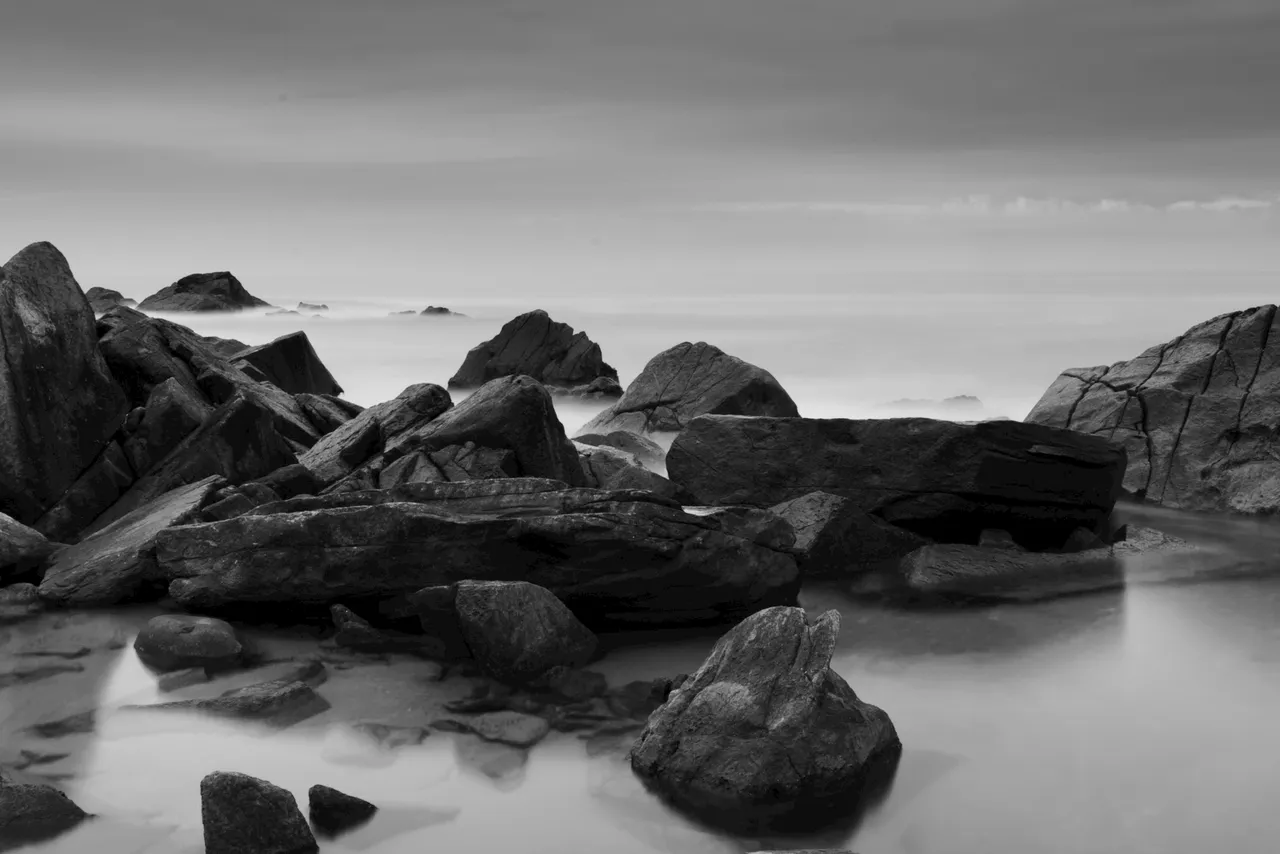
Canon EOS 6D Mark II
EF24-70mm ƒ4L IS USM
ISO 100; 70mm; ƒ16; 71s
Polar; GND8; ND64
Making Of
These pictures were taken in daylight. I mounted a polarising filter, an ND8 filter, an ND64 filter and a GND8 filter in front of the lens. During the shoot, I got my feet wet from time to time, despite the falling tide. The swell was difficult to predict. But worse was that when I reached the tripod, the waves changed the position of the tripod and I had to repeat the exposure. I converted the first two pictures to black and white. The third picture is unprocessed.
Diese Aufnahmen entstanden bei Tageslicht. Vor das Objektiv montierte ich einen Polarisations-, einen ND8-, einen ND64- und einen GND8-Filter. Während der Aufnahmen bekam ich trotz sinkender Tide hin und wieder nasse Füße. Der Wellengang war schwer vorherzusagen. Schlimmer war jedoch, dass die Wellen bei erreichen des Stativs, die Position des Stativs veränderten und ich die Belichtung wiederholen musste. Die ersten beiden Bilder habe ich in Schwarzweiß umgewandelt. Das dritte Bild ist unbearbeitet.

Canon EOS 6D Mark II
EF24-70mm ƒ4L IS USM
ISO 100; 24mm; ƒ16; 45s
Polar; GND8; ND64
At night I dared to try despite the floodlight. It was to be the continuation of my "SAFE!" series.
Here is a link to the post
For this I built a tool, which I describe in more detail below.
In the following picture there are shadows of myself in the picture. It was just too bright.
In der Nacht wagte ich dann doch einen Versuch trotz des Flutlichts. Es sollte die Fortsetzung meiner Serie "SAFE!" werden.
Hier ein Link zum Post
Dafür baute ich mir ein Tool, welches ich unten genauer beschreibe.
Im folgenden Bild sind Schatten von mir selbst im Bild zu sehen. Es war einfach zu hell.
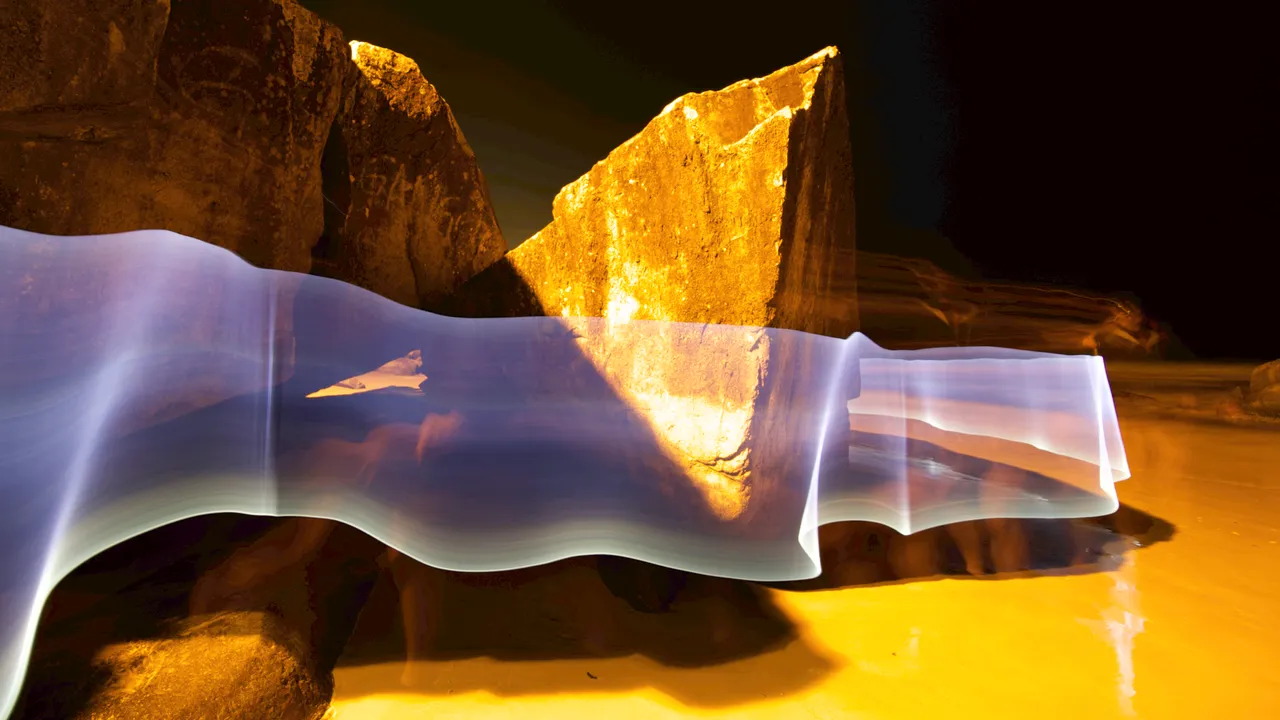
Canon EOS 6D Mark II
LAOWA 12mm
ISO 100; 12mm; ƒ22; 17s
Two days later, I started the second attempt. I had adapted the dress code. I wore black clothes that completely covered my arms and legs and had a black hood on. I also adjusted the choreography a bit. I only touched the tool by the handle and I only moved at a higher speed in the shade. That worked out in the end.
Zwei Tage später startete ich den zweiten Versuch. Die Kleiderordnung hatte ich angepasst. Ich trug schwarze Kleidung, die meine Arme und Beine vollständig bedeckte und hatte eine schwarze Kapuze auf. Ausserdem passte ich die Choreografie etwas an. Das Tool fasste ich nur noch am Stiel an und ich bewegte mich ausschließlich mit einer höheren Geschwindigkeit im Schatten. Das klappte dann schließlich auch.
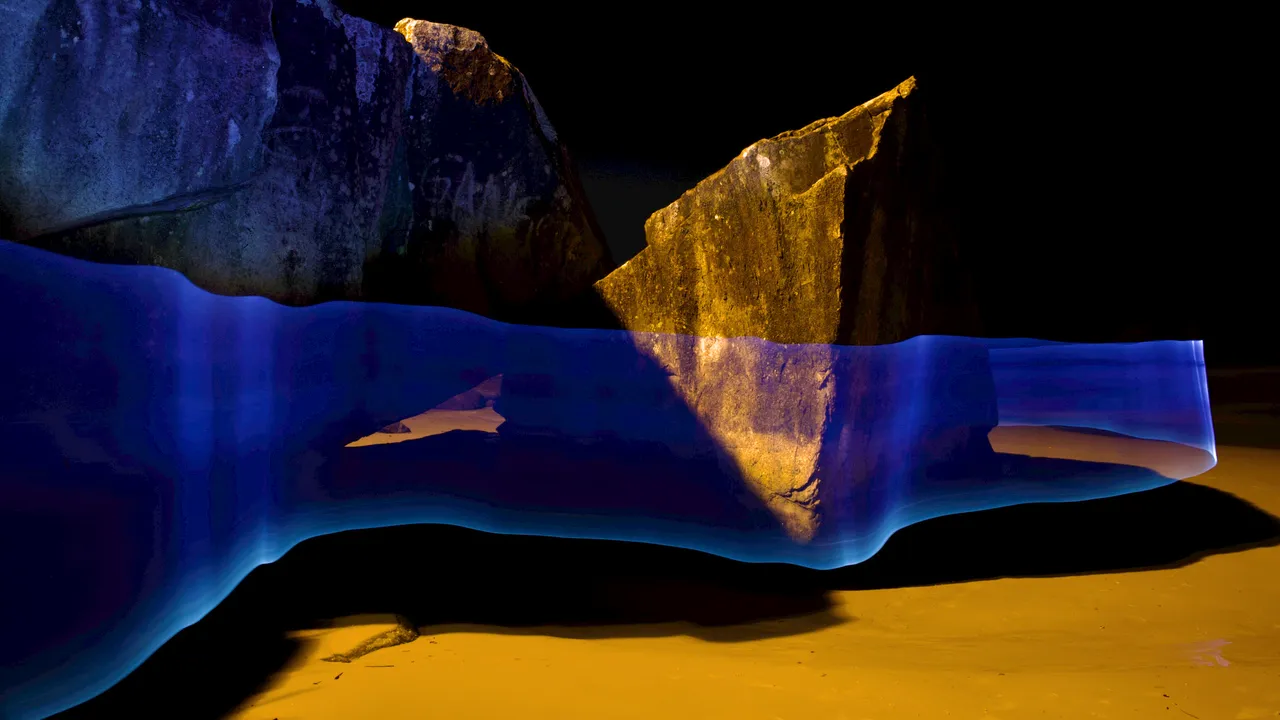
Canon EOS 6D Mark II
EF24-70mm ƒ4L IS USM
ISO 100; 24mm; ƒ16; 14s
After that, I tried out some other motifs nearby. That's what I show in the next two pictures.
Danach versuchte ich noch einige andere Motive in der Nähe aus. Das zeige ich auf den nächsten beiden Bildern.
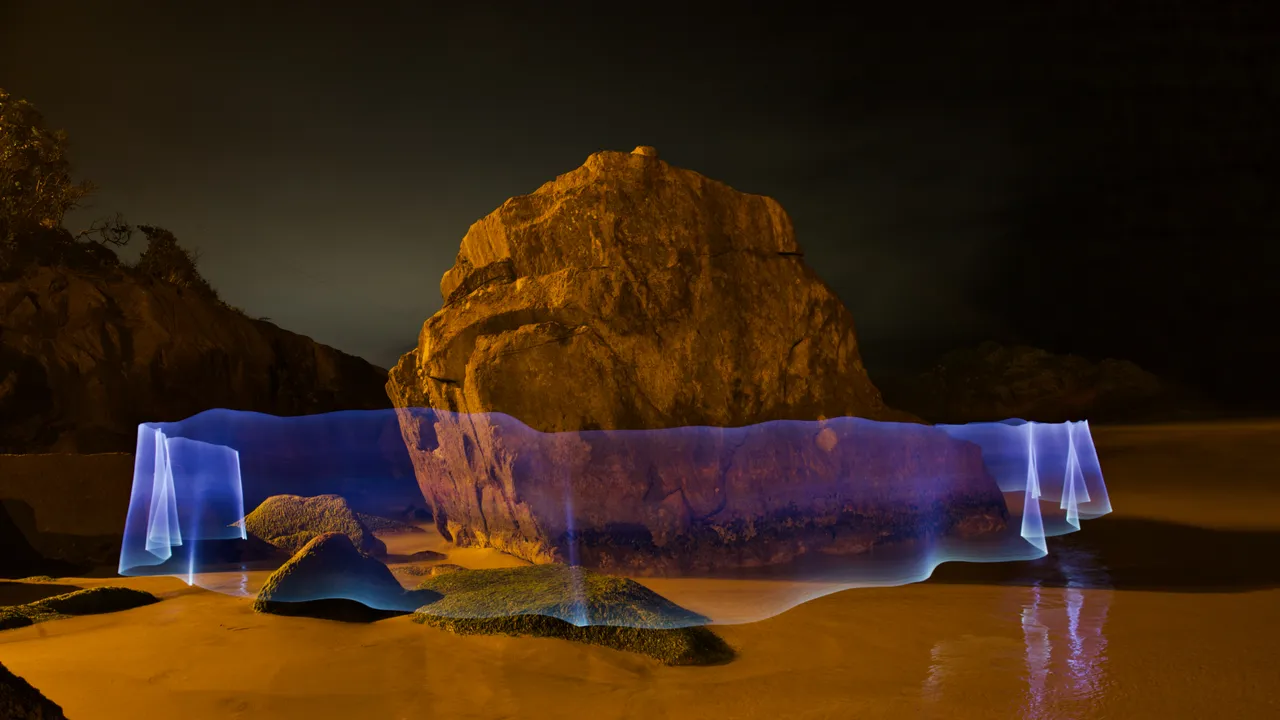
Canon EOS 6D Mark II
EF24-70mm ƒ4L IS USM
ISO 100; 24mm; ƒ11; 48s
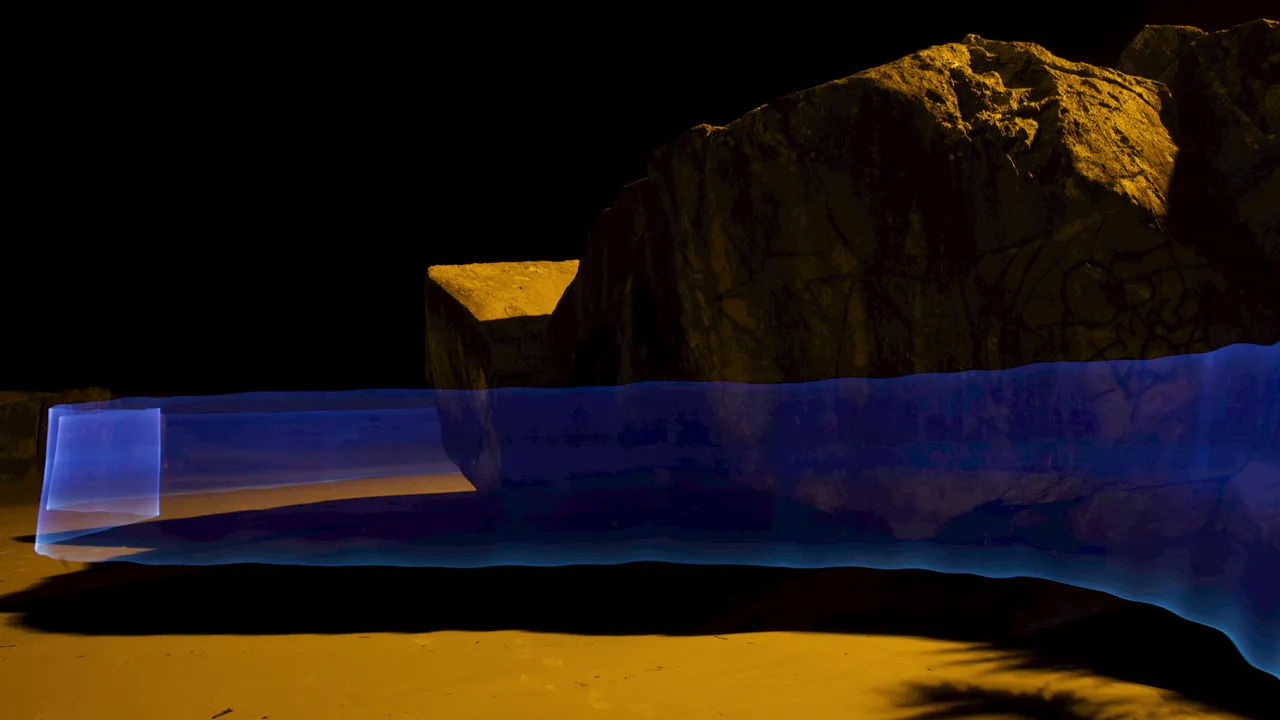
Canon EOS 6D Mark II
EF24-70mm ƒ4L IS USM
ISO 100; 28mm; ƒ14; 28s
The Tool
To achieve this veiling effect, I usually use my 2m long DIY pixel stick. Unfortunately, it didn't fit in my flight luggage. So I had to come up with something else. I usually take a silicone cord with me when I travel. I attached it with tape to a broomstick I found around the house. With the help of an adapter, I mounted a torch with a blue filter on the silicone cord and attached it to the handle with duck tape as well. With that, the tool was ready for use.
Um diesen Schleiereffekt zu erzielen, benutze ich normalerweise meinen 2m langen DIY-Pixelstick. Der passte leider nicht in mein Fluggepäck. Deshalb musste ich mir etwas anderes einfallen lassen. Eine Silikonschnur habe ich meistens mit auf Reisen. Diese befestigte ich mit Klebeband an einen Besenstiel, den ich im Haus gefunden habe. Mit Hilfe eines Adapters montierte ich eine Taschenlampe mit blauen Filter an die Silikonschnur und befestigte diese ebenfalls mit Klebeband am Stiel. Damit war das Tool einsatzbereit.
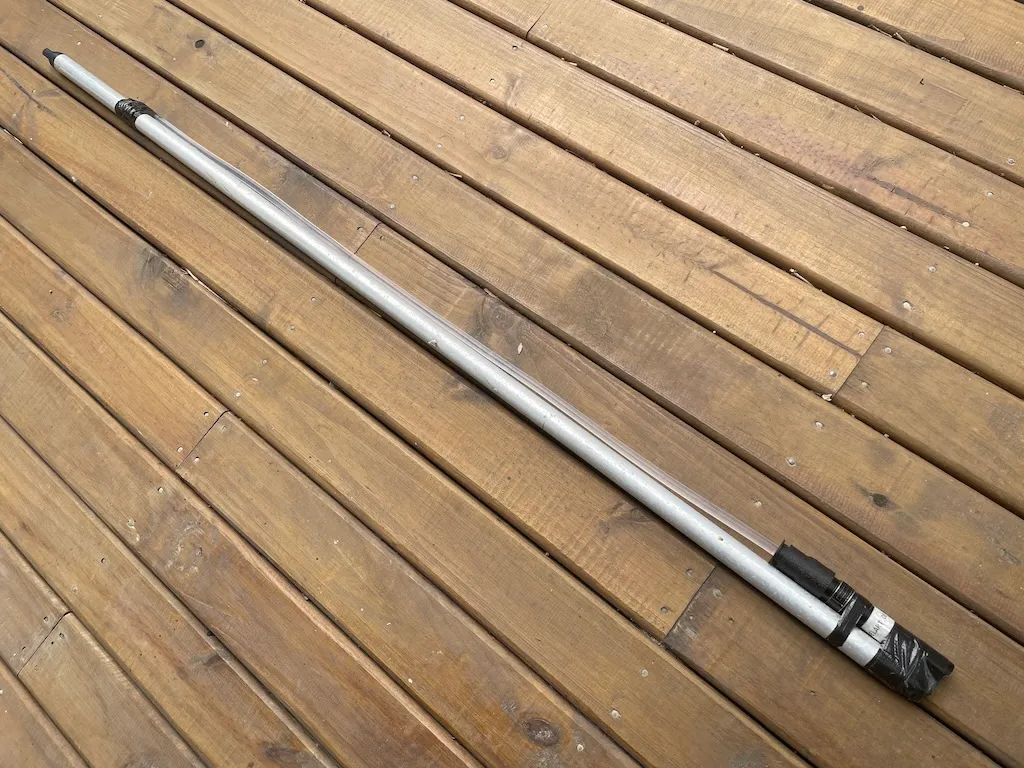
The Tool
The last picture shows the set on the coast. I hope you enjoyed today's post and will be back next Sunday. There is still a lot to report from Santa Catarina. So stay tuned!
Das letzte Bild zeigt das Set an der Küste. Ich hoffe, der heutige Post hat dir gefallen und du bist am nächsten Sonntag wieder dabei. Es gibt noch einiges aus Santa Catarina zu berichten. Also bleib dran!
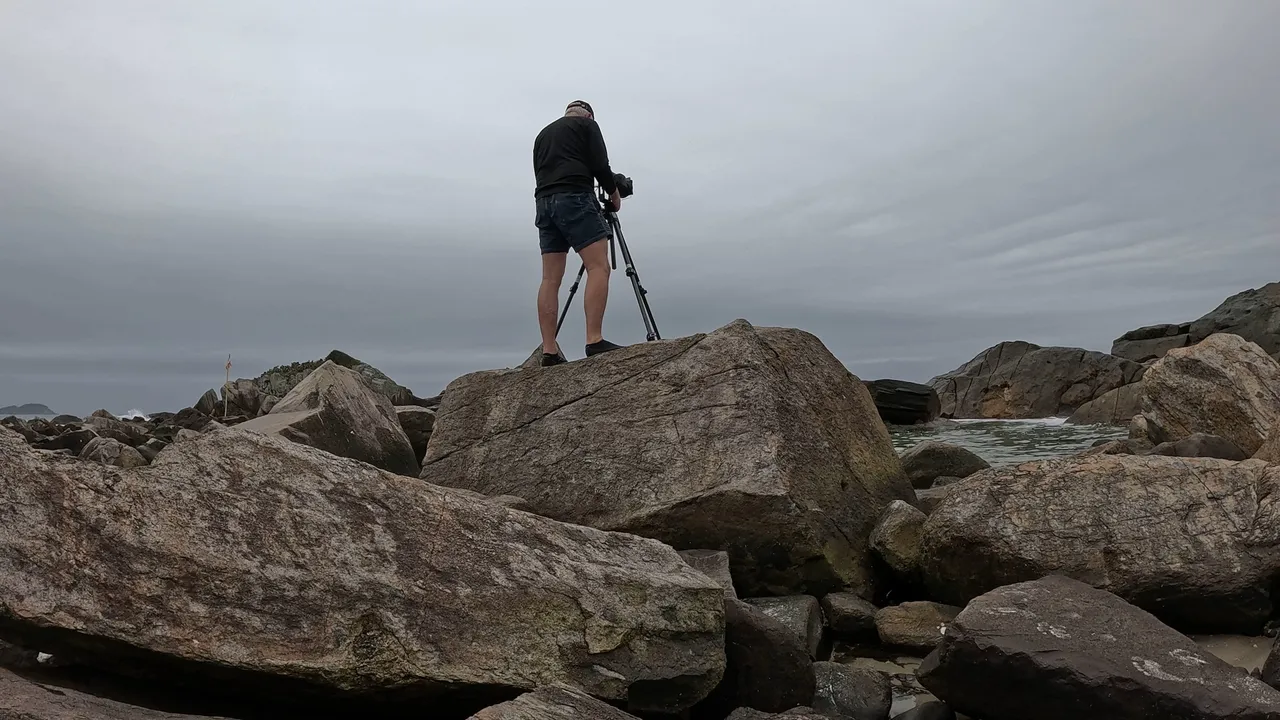
What Is Light Painting?
Light painting is a unique art form. As a rule, the darkness is illuminated by the artist with various light sources and traces of light are painted into the picture with various lighting tools. Various techniques are used, such as camera rotation or other movements of the camera during exposure. The creative possibilities are almost unlimited. When using ND filters, this technique can also be used in daylight. All images were taken during a single exposure. Apart from denoising, sharpening, cropping and possibly adjusting the white balance, the images are not processed on the computer.
Lichtmalerei ist eine einzigartige Kunstform. In der Regel wird die Dunkelheit mit diversen Lichtquellen vom Künstler ausgeleuchtet und Lichtspuren mit diversen Lichtwerkzeugen ins Bild gemalt. Dabei kommen verschiedene Techniken zum Einsatz, wie Kamerarotation oder andere Bewegungen der Kamera während der Belichtung. Die kreativen Möglichkeiten sind nahezu unbegrenzt. Bei Einsatz von ND-Filtern kann diese Technik auch bei Tageslicht angewand werden. Alle Bilder wurden während einer einzigen Belichtung aufgenommen. Abgesehen vom Entrauschen, Schärfen, Beschneiden und eventuellem Anpassen des Weißabgleichs werden die Bilder nicht am Computer bearbeitet.
CandelART
more about me and my art:

WE ARE LIGHT PAINTERS
To help and support the LightPainters community here on Hive I would appreciate your delegation of HivePower. Any amount is appreciated. It does not require much to get started, we are happy for any gesture. @lightpainters
How to delegate?
Delegate 50HivePower, [50HP]
Delegate 250HivePower, [250HP]
Delegate 500HivePower, [500HP]
Delegate 1000HivePower, [1000HP]
All the Hive Power will help to upvote the artist's contribution as part of the LightPainters community









